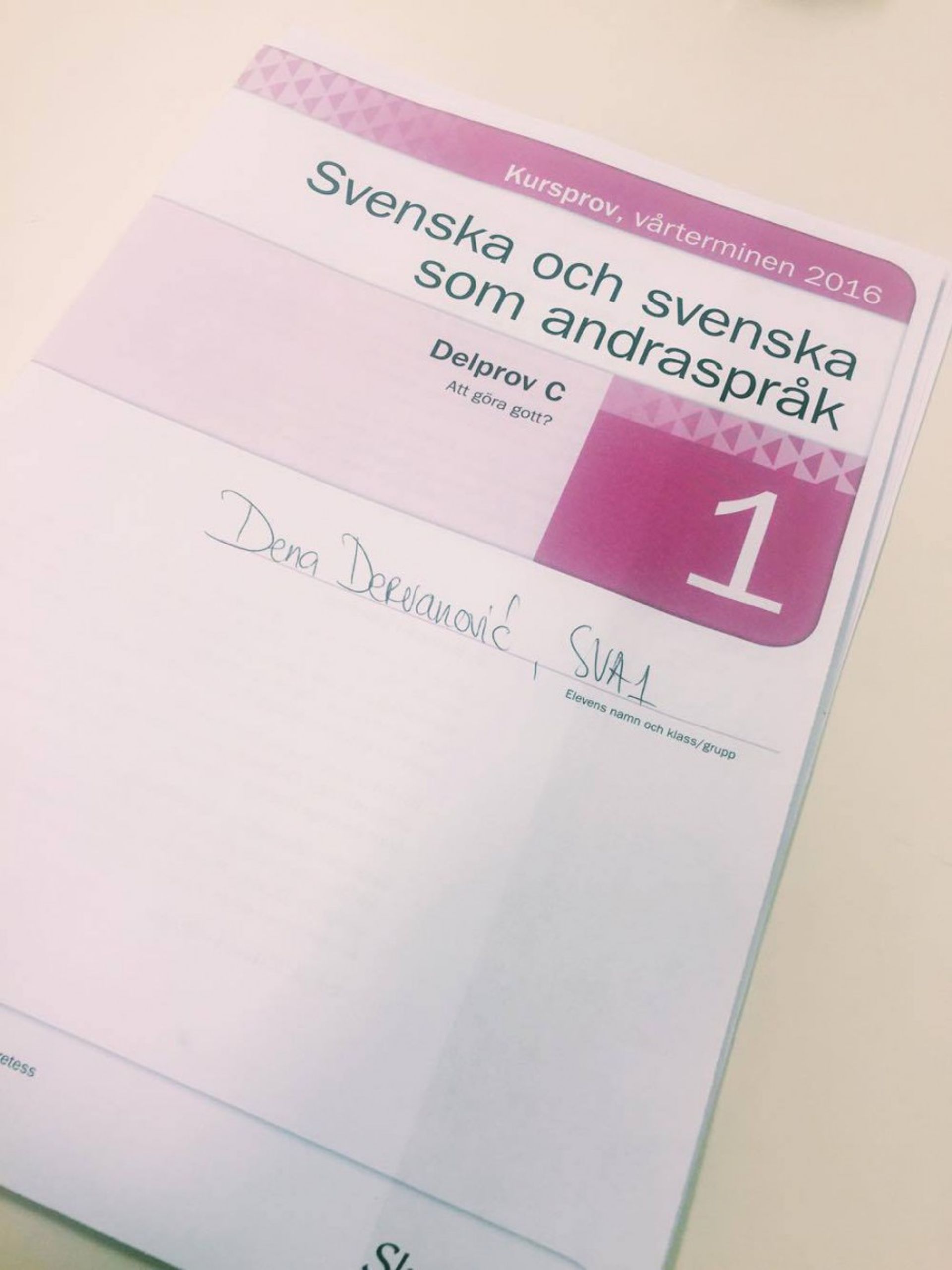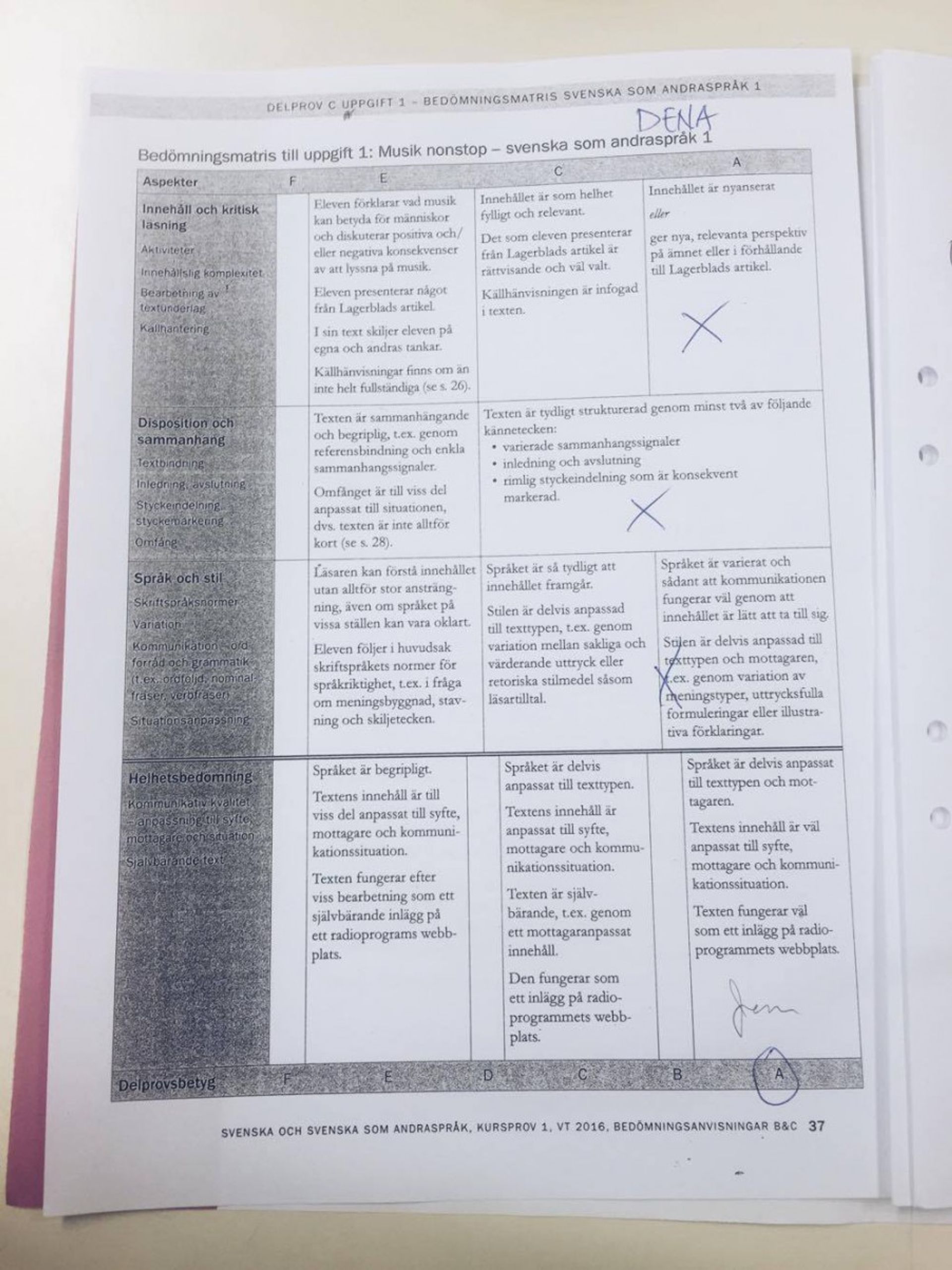
Written by Dena
16 May 2016
Nationella prov: what, why?
The journey of learning Swedish is consisted of a couple of inevitable national exams (in Swedish: nationella prov) that assess your knowledge periodically and allow you to continue your education.
The first nationella prov is NP C, which you might be able to skip (like I did), and the next one is NP D, which is the one that is done after SFI (Swedish for Immigrants) is finished. I wrote about that in December 2015, when I finished my SFI course.
After that, depending on your grade on the NP D, you can go to grundnivå, or you can go to gymnasienivå. Gymnasiet is higher than grund, and it is an equivalent of a high school level. If your grade on NP D is A or B you can decide to skip grund and go straight to gymnasiet. This is what I did in January and I was happy with my choice.
Now, almost a whole semester later, I am finishing the first gymnasiet course called Svenska som andraspråk 1 (Swedish as a second language). There is a total of 3 Svenska som andraspråk (SVA) levels before you reach a C1/C2 level in Swedish.
At the end of SVA 1, you have to do yet another Nationella prov. This exam shows that you can continue studying Swedish through the SVA courses. So, you can’t really continue without it.

About the SVA 1 course:
We had three classes per week at SVA 1. The book we used is Språkporten and it is pretty much the only book you’ll need for the whole duration of your formal education in the Swedish language. Unlike with SFI, you don’t get this book as a loan, but have to buy it yourself. Considering all of the courses in Swedish are for free, I guess this is not so much to ask of students. The tempo of the course is moderately intense, there is a lot of reading to be done and there are frequent obligatory tests and homework, such as preparing presentations in front of the class etc. You also get to pick a book (like a novel) that you can read during the whole course and which you will write a review of by the end of the course.

It’s fair to say I definitely noticed the jump I made from SFI to gymnasiet. At first, I thought I had perhaps gone ahead of myself by going straight to the higher level, but I quickly caught up with the class level. What I noticed during this course is that my vocabulary got very extended, much more than I had hoped it would, especially over such a short time period. Right now I can confidently understand pretty much everything I read or hear, which is an amazing thing considering I have been at this for a bit over than a year.
The fact that you have to prepare presentations for the class really helped me get out of my shy-shell when it comes to Swedish. If it’s true that you have different personalities in each language, then I am pretty much an extrovert in Montenegrin, English and Italian, but I am very shy in Swedish. It is a change I have not yet adapted to completely, but I am working on it because opening up will help me get fluent. It helps to try to speak Swedish whenever possible. I even spoke Swedish at a doctor’s appointment and at a job interview, so that was a huge confidence boost even though I know I made a thousand mistakes!

Due to my crazy busy law student schedule, I couldn’t make the best use of my classes at SVA 1 since I had to skip quite many of them. This is something I have lamented very much, since I believe one can learn a lot in a class full of people and with a teacher. I was lucky and had a very nice and understanding teacher too.
Overall: Good course, you learn a lot and your vocabulary gets very rich. My recommendation is to study continuously.
About the national exam:
The exam was consisted of three parts this time: Speaking, Writing and Reading.

Reading: exam started at 9 and finished at 12. A total of 4 texts and 1 poem. After reading each text, you had a set of questions to answer in relation to the respective text. The test was envisaged to see how much you understand.
Writing: exam also started at 9 and finished at 12. So, yes, it had to be held on a different day than the Reading test. Here, you had 4 topics that were essentially the topics from those texts you read at the Reading part. You pick a topic and answer the questions posed in the question sheet in form of an essay. The essay should be between 300 – 700 words. I found it helpful to write on blank paper first before transferring my essay to the answer sheet. There is a grading scale that you are usually acquainted with before the exam, so that you know what your text should have in order to get a good grade. After the exam, you get the grading scale back with all the elements of your text marked. Here’s my grading scale from the National exam:

Speaking: days before the exam, you will get a booklet with the theme of the exam and suggested topics. You are to choose a topic from that list (or think of one that fits the theme) and prepare a 5min presentation on it. You are allowed to use powerpoint or other presentation methods, such as audio and video as well. This is arguably the easiest part since you get to prepare it.
Unlike with NP D, the grade is not that important in this exam, I think. This can remove the pressure (and it certainly would have been helpful for me to know this beforehand haha). After you’ve done the exam, you get an overall grade for the course as well and that’s it with SVA 1. Once you’re done with SVA 1, you have a B2 level of the European framework. ↗️
Overall: I found the exam to be fairly easy, compared to what I expected. My recommendation is to study continuously so that you don’t get swamped with difficult words and loads of material to study before the exam.



